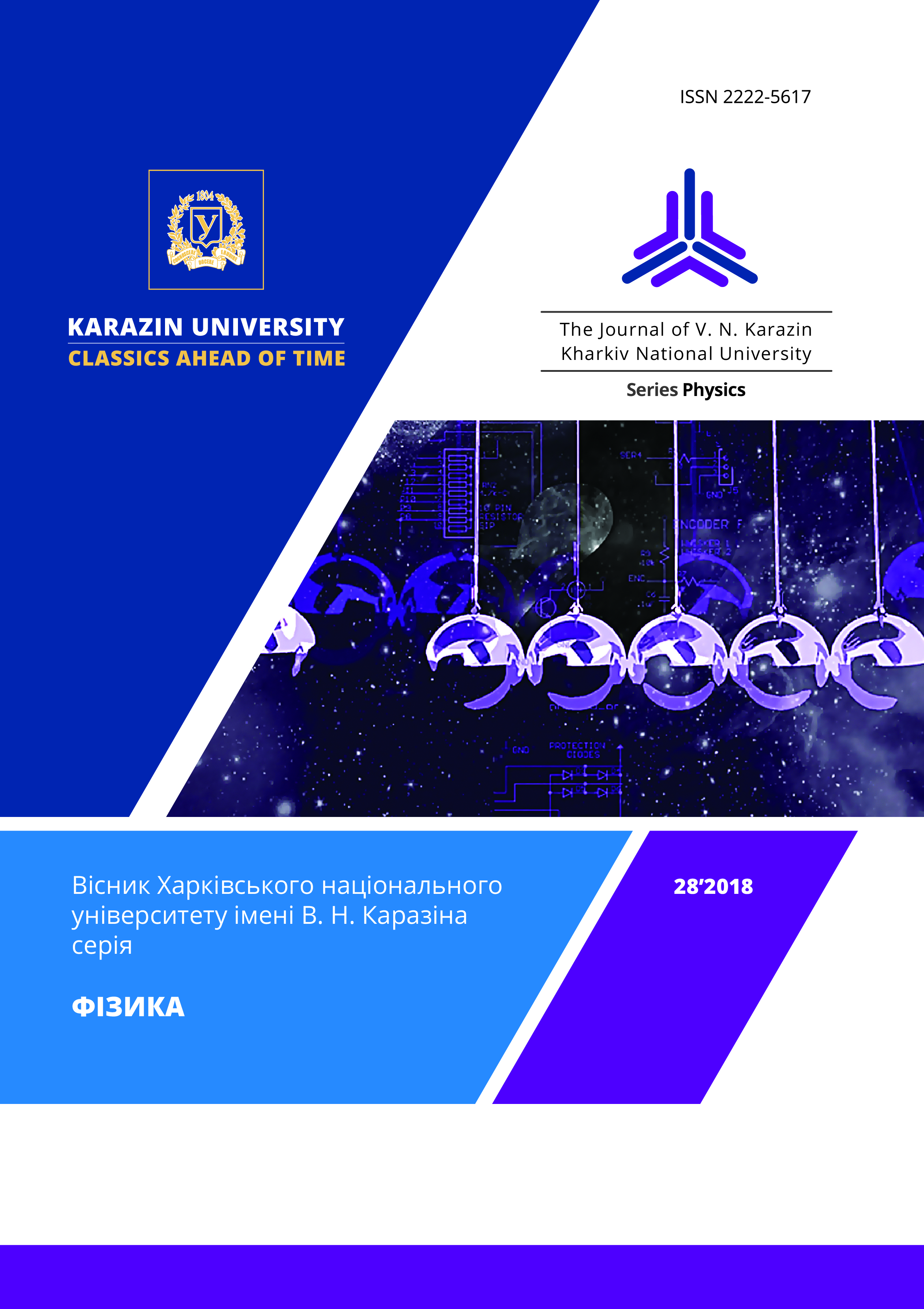Ultrathin ZnO nanowires fabricated by using low-temperature pulsed laser deposition
Abstract
Recently, numerous devices use ZnO nanowires (NWs) as building blocks, for example, light emitters, pressure and gas sensors, resonators and many others. However, for integrations of the NWs into such devices, a high level of NW diameter control is needed. In this work, an opportunity to adjust the NW diameter by using differently doped by Al or Ga seed layers is presented. Moreover, a change of the doping concentrations allows to optimize the growth temperature. Thus, ultrathin NWs, i.e. with a diameter of d < 10 nm can be fabricated by using temperature of T = 400°C. This temperature is far below than those typically used for the fabrication of NWs by pulsed laser deposition
Downloads
References
2. A. R. Hutson, Phys. Rev. Lett., 4, 10, 505, (1960).
3. C. P. Dietrich and M. Grundmann, Wide Band Gap Semiconductor Nanowires: Low-Dimensionality Effects and Growth, edited by V. Consonni and G. Feuillet, USA, Hoboken, Wiley-ISTE, Chapter 22, (2014).
4. M. Grundmann, The Physics of Semiconductors, Germany, Heidelberg, Springer-Verlag, 3 edition, (2016).
5. S. Xu, et al., Adv Mater., 22, 4749, (2010).
6. J. Mei, et al., Procedia Eng., 47, 462, (2012).
7. R. Dauksevicius, et al., Procedia Eng., 120, 896, (2015).
8. Z.L. Wang, Mater. Sci. Eng. R, 64, 33, (2009).
9. S. M. Frolov, et al., MRS Bulletin, 38, 809, (2013).
10. J. S. Horwitz and J. A. Sprague, Pulsed Laser Deposition of Thin Films, edited by D. B. Chrisey and G. K. Hubler, USA, New York, 229, Wiley-Interscience, (1994).
11. M. Lorenz, Zinc oxide as transparent electronic material and its application in thin film solar cells, edited by K. Ellmer, A. Klein and B. Rech, Germany-USA, Berlin-Heidelberg-New York, Springer, Chapter 6, (2006).
12. A. Shkurmanov, et al., Nanoscale Res. Lett., 12, 134, (2017).
13. M. Lorenz, et al., Appl. Phys. Lett., 86, 14, 143113, (2005).
14. A. Shkurmanov, et al., Procedia Eng., 168, 1156, (2016).
15. T. Michalsky, et al., Eur. Phys. J. Appl. Phys., 74, 30502, (2016).
16. M. Willander, et al., Nanotechnology, 20, 332001, (2009).
17. S. Käbisch, et al., Appl. Phys. Lett., 23,10, (2013).
18. S. Sedky, et al., IEEE Trans. on Elec. Dev., 48, 2, 377, (2001).
19. H. Ghayour, et al., Vacuum, 86, 101, (2011).
20. A. Patterson, Phys. Rev., 56, 978, (1939).
21. A. P. Samantilleke, et al., Nanoscale Res. Lett., 6, 309, (2011).
22. A. Rahm, et al., Appl. Phys. Lett., 88, 31, (2007).
23. Y. W. Heo, et al., J Nanosc. Nanotech. 14, 12, 9020, (2014).
24. A.N. Mariano and R.E. Hanneman, J. App. Phys., 34, 2, 384, (1963).
25. A.A. Chernov, Modern crystallography III – Crystal Growth, edited by E. Givargizov, Germany, Berlin-Heidelberg, Springer, (1984).
26. J.M. Ting, et al., J. Am. Ceram. Soc. 92, 11, 2718, (2009).
27. A. Shkurmanov, ZnO-based nanostructures by PLD: growth mechanism, doping and geometry, Universität Leipzig, 2017








3.gif)
